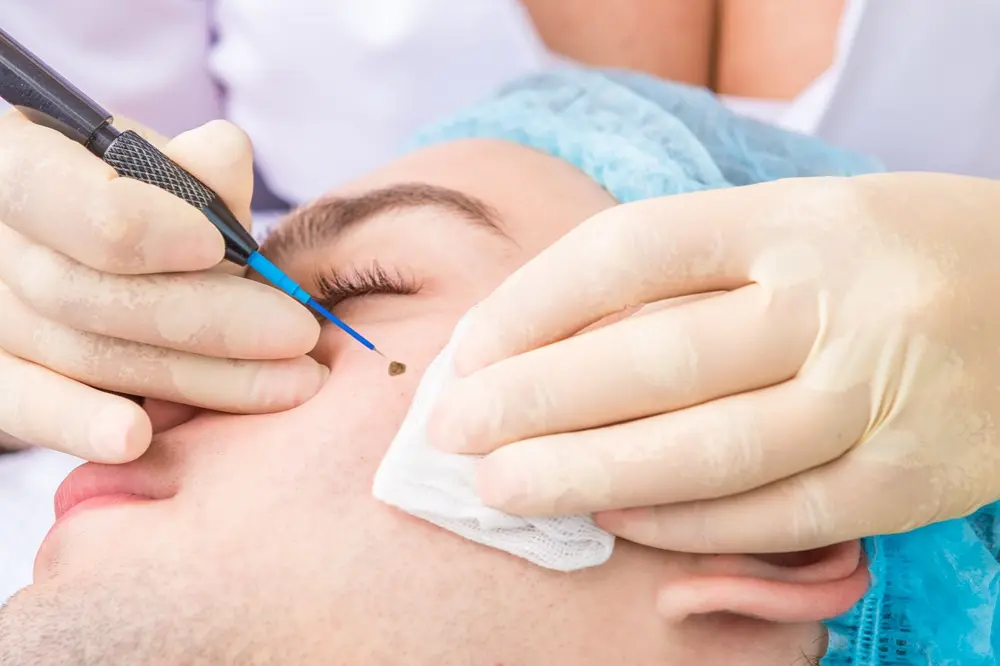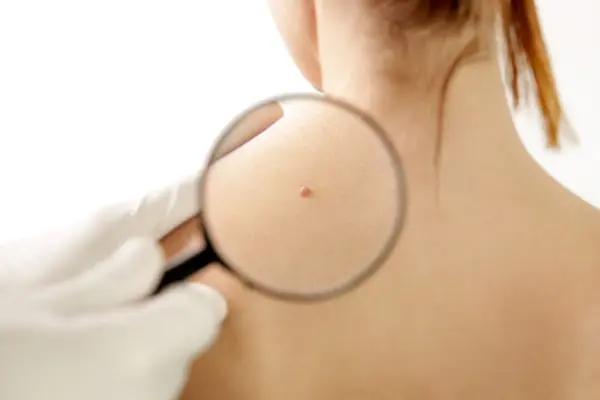How to Remove Skin Tags: A Dermatologist’s Guide
Skin tags, those small, soft, flesh-colored growths that often appear on the neck, armpits, or groin, are a common skin condition. While they are generally harmless, they can be bothersome, especially if they become irritated or caught in clothing.
Many people wonder about the best way to remove them. This article will provide an overview of skin tag removal options, as recommended by dermatologists.

Understanding Skin Tags: How to Remove Skin Tags
Before discussing removal methods, it’s essential to understand what skin tags are. They are benign overgrowths of skin cells, typically caused by friction or skin-to-skin contact. While their exact cause is unknown, they are more common in people with insulin resistance, obesity, and pregnancy.
It’s crucial to remember that while skin tags are usually harmless, it’s always a good idea to consult a dermatologist if you notice any changes in the appearance of a skin tag, such as:
- Bleeding
- Itching
- Pain
- Rapid growth
- Change in color
These symptoms could indicate a more serious skin condition.
When to Consider Removal
The decision to remove a skin tag is a personal one. Many people choose removal for cosmetic reasons, while others opt for it if the tag is causing irritation or discomfort. If you decide to remove a skin tag, it’s important to seek professional help. Attempting to remove a skin tag at home can lead to infection or scarring.
Dermatologist-Recommended Removal Methods
Dermatologists have a variety of methods to safely and effectively remove skin tags. Here are the most common:
Cryotherapy:
This involves applying liquid nitrogen to the skin tag, freezing, and destroying it. It’s a quick and relatively painless procedure.
Electrocautery:
A small electric current is used to burn off the skin tag. This method is often used for larger skin tags.
Ligation:
A thread is tied tightly around the base of the skin tag to cut off its blood supply. Eventually, the skin tag will fall off.

Surgical excision:
In some cases, particularly for larger or multiple skin tags, surgical removal may be necessary. This involves cutting away the skin tag with a scalpel.
Over-the-Counter Options
While there are over-the-counter products available for skin tag removal, dermatologists generally recommend professional treatment. However, if you choose to try an over-the-counter option, look for products that contain ingredients like salicylic acid or tea tree oil. Always follow the product instructions carefully.
Home Remedies: A Word of Caution
Many home remedies for skin tag removal circulate online, such as apple cider vinegar, banana peel, and garlic. While some people claim success with these methods, there is limited scientific evidence to support their effectiveness. Moreover, using these remedies can irritate the skin or lead to infection.
Preventing Skin Tags
While there’s no guaranteed way to prevent skin tags, maintaining a healthy weight, practicing good hygiene, and avoiding excessive friction can help reduce the risk.
Aftercare
After skin tag removal, it’s essential to follow your dermatologist’s aftercare instructions. This usually involves keeping the area clean and dry and avoiding picking or scratching at the treated area.
What is a skin tag?
A skin tag, or acrochordon, is a small, soft, benign growth that typically forms on areas of the skin where there’s friction, like the neck, armpits, or groin. They are usually flesh-colored but can sometimes be darker.
While skin tags are harmless, they can become irritated or caught in clothing, making them bothersome for some people.
How to Get Rid of Skin Tags
Disclaimer:
While there are various methods to remove skin tags, it’s always recommended to consult a dermatologist for proper diagnosis and treatment, especially if you have multiple skin tags or they are causing discomfort.
Professional Removal Methods
These methods are generally safe and effective when performed by a healthcare professional:
Electrocautery: Uses heat to burn off the skin tag.
Ligation: A thread is tied around the base of the skin tag to cut off its blood supply, causing it to fall off.
Over-the-Counter Options
While less reliable than professional methods, these options are available for purchase:
- Skin tag removal kits: Often use freezing or chemical agents.
- Topical creams: Contain ingredients like salicylic acid or tea tree oil.
- Cryotherapy: This involves freezing the skin tag with liquid nitrogen, causing it to fall off.
What tool does a dermatologist use to remove skin tags?
Tools Used by Dermatologists for Skin Tag Removal
Dermatologists employ various tools and techniques to remove skin tags:
Cryotherapy:
Liquid nitrogen applied with a cotton swab or spray to freeze and destroy the skin tag.
Electrocautery:
Employs a handheld device that emits heat to burn off the tag.
Ligation:
Involves a thin thread tied tightly around the base of the skin tag to cut off blood supply, causing it to fall off.
Surgical excision:
Uses a scalpel to cut off the skin tag.
Forceps:
Is there a way to remove skin tags without surgery?
In conclusion
while skin tags are generally harmless, they can be bothersome. If you decide to remove a skin tag, consulting a dermatologist is the safest and most effective approach. By understanding the different removal methods and following proper aftercare, you can achieve the desired results without complications.
Disclaimer:
This article is intended for informational purposes only and should not be considered medical advice. Always consult with a qualified healthcare professional 1 for any health concerns.

